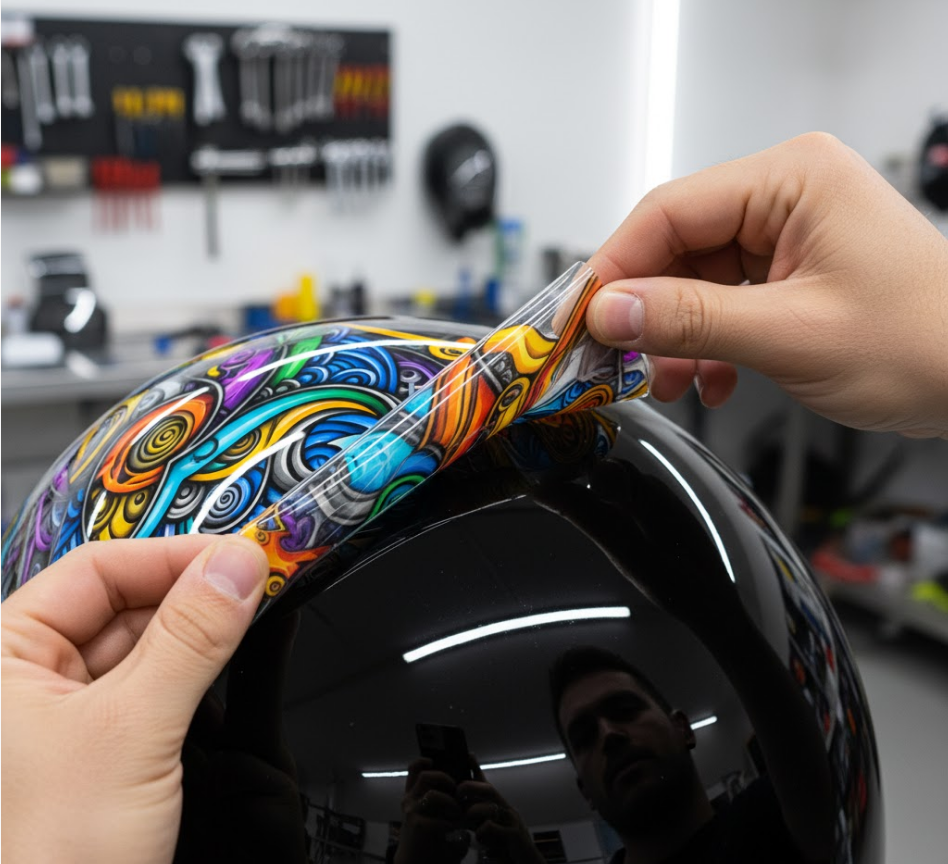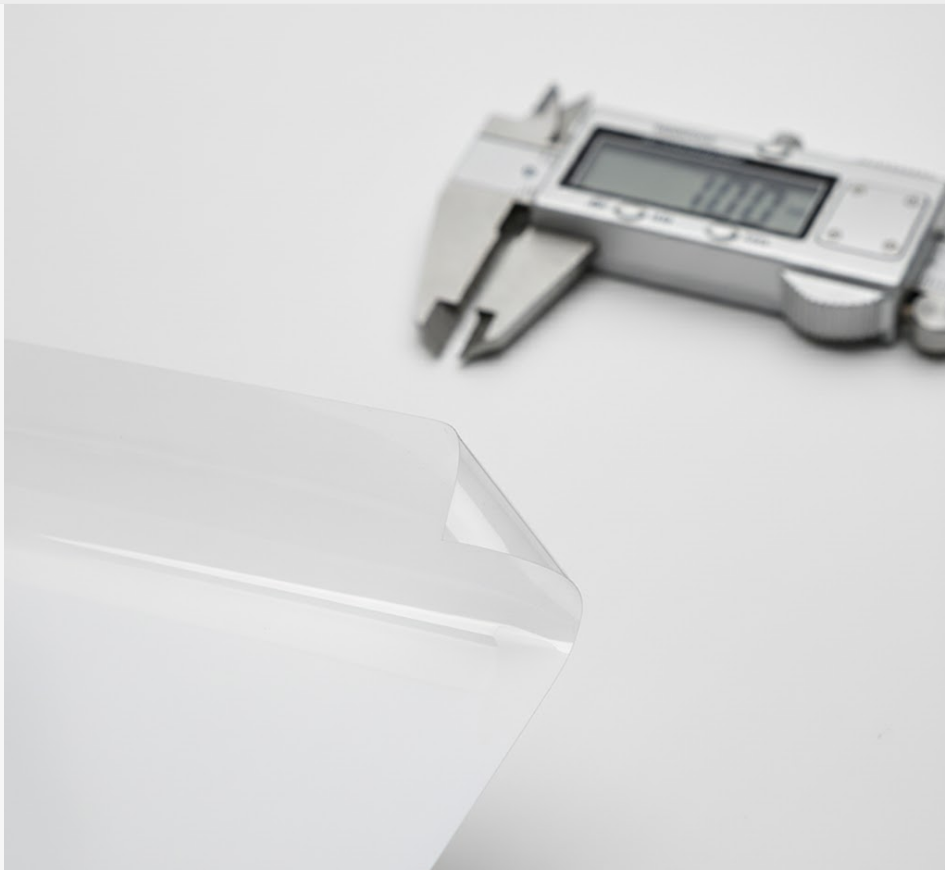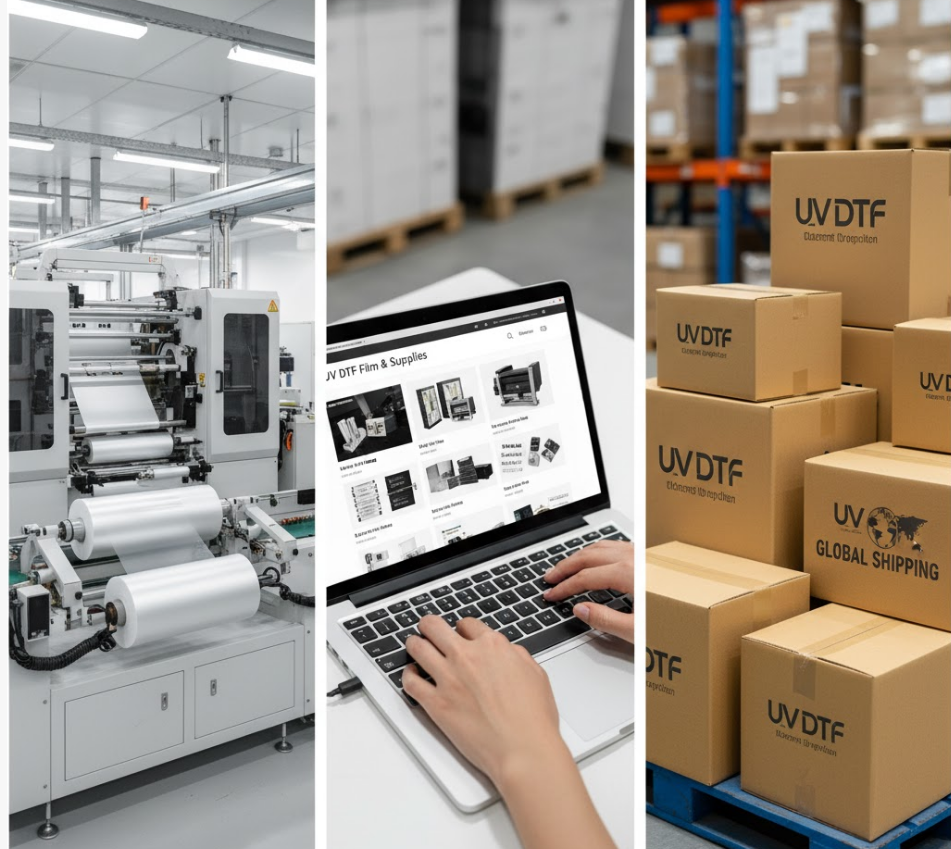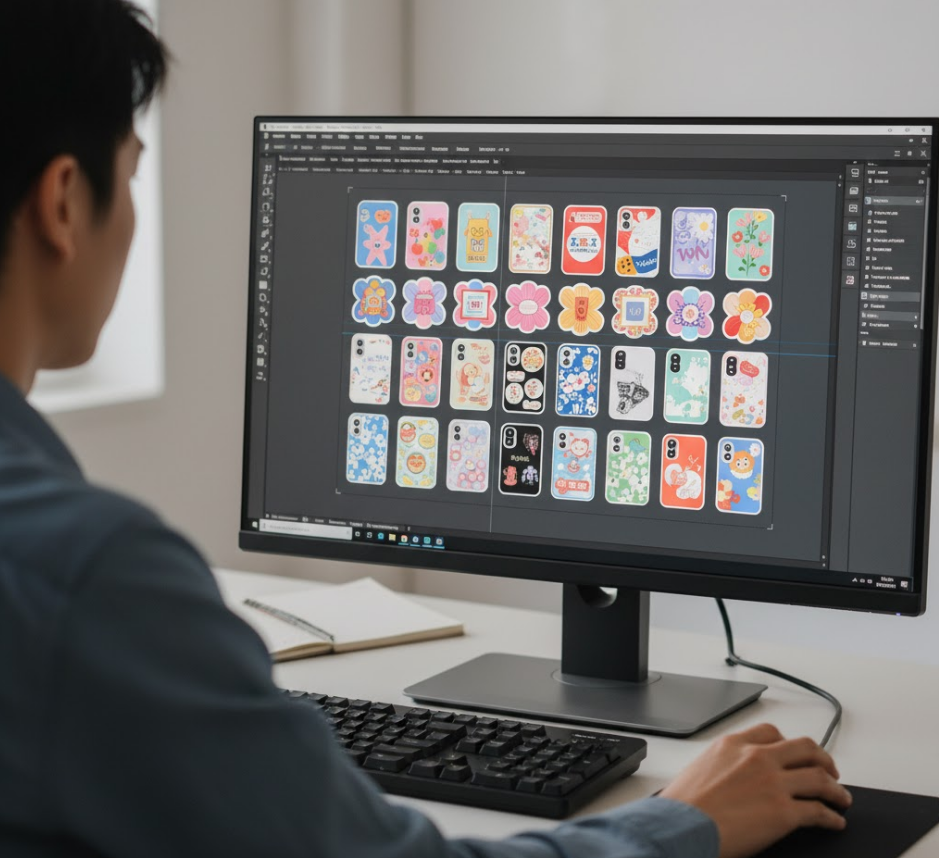English 

T: +86-180-0799-3137
E: info@refinecolor.com
E: info@refinecolor.com
9F, Building 25, Tian 'an Shenchuanggu, Fenggang Town, Dongguan 523703, China

Views: 0 Author: Refinecolor-Eason Publish Time: 2025-10-08 Origin: Site











UV DTF (Direct-to-Film) technology has opened a new frontier in product decoration. Its ability to apply vibrant, durable designs to irregular and hard surfaces without pretreatment. But the success of any print job hinges on one critical component: the film itself. Sourcing high-quality UV DTF film, especially in convenient sheet form, is paramount.

Understanding the technology is the first step toward making an informed purchasing decision. UV DTF is not just another printing method; it's a multi-layered system that delivers exceptional results when the components work in harmony.
UV DTF is an advanced printing process where designs are printed with UV-curable inks onto a special adhesive-backed sheet (Film A). This printed sheet is then laminated with a transfer film (Film B). The resulting decal can be applied to a vast range of substrates—including glass, metal, plastic, wood, and ceramics—simply by pressing it down and peeling away the transfer film. The UV-cured ink forms a resilient, varnish-like layer that adheres strongly to the surface.
The magic of UV DTF lies in its two-part film system:
Film A (The Printable Film): This is the base layer with a specialized coating designed to receive the UV ink and a layer of adhesive on the back. The print head deposits layers of color, white ink, and varnish onto this film.
Film B (The Transfer Film): After printing, Film B is laminated onto Film A. Its purpose is to hold the printed design together, allowing it to be lifted cleanly from the Film A backing and transferred to the final product.
The synergy between these two films is critical. A poor bond or inconsistent coating can lead to failed transfers, wasted materials, and lost time.
While roll-to-roll systems are ideal for mass production, sheet-form film (commonly in A4, A3, or custom sizes) offers distinct advantages for many businesses:
Convenience: Sheets are perfect for short runs, one-off custom jobs, and businesses with limited space. They are easy to handle and require no complex roll-feeding mechanisms.
Flexibility: Easily switch between different designs and projects without committing to a long roll of a single layout. This is ideal for personalized goods and prototyping.
Sampling: Sheets allow you to test new film brands, finishes, and suppliers without a significant financial investment, ensuring compatibility with your printer and inks.
We love sharing real success stories from our customers, and this case from Studio X perfectly illustrates how the right technology and materials can transform a tedious task into a highly efficient one.
The Challenge
Like many custom gift and promo studios, Studio X frequently handles small, highly varied orders—like custom phone cases. In the past, they used roll-to-roll media for these jobs. While great for large runs, this process was inefficient for one-off orders, leading to significant material waste and time lost during each design changeover.
The Solution: Switching to the RefineColor A3 System
After integrating our RefineColor RF-ZZ2C printer into their workflow, they decided to move all their small-batch jobs to our A3 UV DTF sheets. This allowed them to easily "gang up" multiple different customer designs onto a single sheet, maximizing the use of every inch of film.
A Day of Perfect Results
They shared the production log from a typical workday, and the results were nothing short of inspiring.
On that day, working in a stable environment (25°C, 50% RH), they used our A/B Film (Batch A2410-07 / B2410-14) and INK2410 series inks to produce 20 completely unique custom phone case decals.
Here’s the "recipe for success" they perfected:
RIP Settings: They set CMYK coverage to 85%, with a solid two-layer white ink base at 90% each for opacity, and a 70% varnish for a premium yet subtle finish.
Printer Settings: Printhead height was set to 1.8 mm, UV lamp power at 60%/40%, and they used an 8-pass mode to ensure perfect detail and curing.
Lamination & Finishing: They applied the B film with 0.30 MPa of pressure at a speed of 1.2 m/min, then let the finished transfers rest for 5 minutes to ensure a stable bond.
The Outcome? Across all 20 custom orders, they achieved zero errors and zero waste. Spot-checks of the finished decals were outstanding:
Adhesion tests scored an excellent 4B–5B, meaning the transfers were incredibly durable.
Pencil hardness tests rated 3H for superior scratch resistance.
Color accuracy (ΔE) was ≤1.8, meaning there was virtually no perceptible color difference from the original design.
Compared to their previous roll-to-roll process, the waste from order changes and plate-making was nearly eliminated, and their overall production cycle time improved by approximately 15%.
A Practical Tip from Studio X
They also generously shared this helpful tip: If you ever notice ink breaking on very fine characters or slight cracking in the white ink, you can make small adjustments within this parameter window (e.g., print head height between 1.6–1.9 mm; varnish between 70–90%; UV lamp power 50–60%/35–45%). They found it easy to quickly dial in the perfect setting.
This case is a true testament to how choosing the right production method is critical for boosting efficiency and guaranteeing quality.
Not all UV DTF film is created equal. To ensure uncompromising performance and vibrant results, evaluate potential suppliers based on these technical specifications.

Size and Specifications: Look for suppliers offering standard sizes like A4 and A3, which fit most flatbed printers. A reliable manufacturer will also provide options for custom sizing to meet specific production needs.
Film Thickness and Coating Quality: The coating on Film A is crucial for ink adhesion and color vibrancy. A high-quality, evenly applied coating prevents ink bleeding and ensures sharp details. Film thickness contributes to durability and ease of handling.
Adhesive & Peel Experience (A/B Film Bonding): The quality of the adhesive on Film A and the bond it forms with Film B determines the peel experience. It should be strong enough to lift the entire design cleanly but release effortlessly from the final product without leaving residue.
Transparency and Finish: The base film should be perfectly transparent to avoid any unwanted tint on the final product. Finishes like high-gloss or matte can add a premium look to your designs.
Compatibility with UV Inks & Printers: The film’s coating must be chemically compatible with your specific brand of UV-curable inks to ensure proper curing, adhesion, and long-term durability.
Supplier Reliability and Quality Control: A dependable supplier implements strict quality control to guarantee consistency from sheet to sheet. This minimizes production variables and ensures repeatable results for your clients.
We tested 30 A3 sheets each using three types of A and B films on two RF-UV printers (i3200 printheads).
The average first-pass transfer success rates were 93.3%, 88.7%, and 95.0%, respectively. Failures primarily resulted from white ink layer breakage (56%) and premature detachment of the B film (31%). The parameters were fixed: printhead height 1.8 mm, 4 passes x 2, white:clear varnish ratio 1:0.7, left/right lamp ratio 60%/40%.
Thus, the higher success rate is likely related to the coating consistency of the A film and the viscoelastic properties of the B film.
Once you know what to look for, the next step is finding a supplier. Your choice will depend on your business volume, budget, and quality requirements.

If you run a boutique shop or a small creative studio, your reputation is built on quality and consistency. You don't have time for failed prints or troubleshooting inconsistent materials when a client's order is on the line. This is where sourcing from a specialty manufacturer is a strategic advantage. You gain access to professionally vetted film that performs reliably every single time, along with expert support if you ever run into an issue. Fast shipping and easy ordering mean you can stay agile and responsive to your customers' demands.
For your small-to-medium production line, especially if you are an international buyer, minimizing variables is the key to efficiency. Buying film directly from the company that manufactured your printer is the most straightforward way to guarantee compatibility. You eliminate the risk of the film reacting poorly with your inks or curing system, which prevents costly setup errors and material waste. This approach provides a turnkey solution, ensuring the consumables you use are perfectly matched to the hardware you invested in.
Sometimes an urgent, last-minute order comes in and you simply can't wait for a shipment. For these situations, your local print supply store is an invaluable resource. You can drive over and get a small number of sheets immediately to finish the job and keep your client happy. This also gives you the unique advantage of physically inspecting the film for quality and thickness before you buy.
When your operation demands high volume and the best possible unit cost, going directly to the source is the most logical step. Engaging with factories on platforms like Alibaba allows you to leverage economies of scale, significantly improving your profit margins. This channel is ideal for securing a long-term supply chain or ordering custom-sized sheets tailored to your products. You'll find that many factories are surprisingly flexible, offering MOQs as low as 50-100 sheets with options for customized coatings.
If you're just beginning your journey with UV DTF or simply want to test a new concept without a large upfront cost, online marketplaces are your playground. With a few clicks, you can order a small pack of 10 or 20 sheets and have it at your door in a couple of days. It’s the perfect low-risk way to experiment. However, be aware that quality can be a lottery. Treat these purchases as a test, and if you find a product you like, be sure to vet the seller carefully before relying on them for critical business orders.
Matching a supplier to your operational scale is key to building a sustainable and profitable workflow.
For Hobbyists and Beginners: Prioritize suppliers offering small quantities of standard A4/A3 sheets, such as online specialty stores or marketplaces with reputable vendors. This minimizes initial investment while you learn the process.
For Small Businesses: Seek a strategic partner who provides stable quality, consistent stock, and medium batch sizes. Direct manufacturers like RefineColor or established specialty suppliers are ideal choices.
For Large-Scale Manufacturers: The best option is to establish a direct relationship with a factory for mass OEM production, custom specifications, and brand customization. This ensures the best pricing and a tailored supply chain.
Methods for verifying supplier credibility: Before committing to a large order, always verify a supplier’s credibility through certificates (CE, RoHS, ISO9001), requesting samples for testing, reading customer reviews, and confirming delivery times and after-sales support policies.
Sourcing the right film is only half the battle. Proper usage is essential for success. Avoid these common pitfalls:
Using incompatible film: Ensure the film is rated for your printer model and the specific UV ink set you use.
Ignoring coating or thickness differences: Different films may require adjustments to your printer's vacuum strength or print head height.
Skipping peel tests: Always test one transfer from a new batch of film on a scrap piece of the intended substrate before proceeding with a bulk run.
Not storing sheets properly: Keep film flat, in its original packaging, and in a cool, dry environment away from direct sunlight to prevent curling and dust contamination.
Pro Tip: Always print and apply one test sheet from a new order using your standard production settings. This small step can save you from wasting an entire batch of materials on a failed run.
To improve profitability, minimize material waste with these best practices:

Optimize Layouts: Use your design software to nest multiple smaller designs onto a single A3 or A4 sheet. This "ganging" technique significantly reduces unused material.
Proper Storage: Store sheets flat to prevent the edges from curling, which can cause print head strikes and feeding errors.
Perfect Your Peel Technique: Peel the transfer film (Film B) back at a low, sharp angle. A slow, steady motion prevents tearing the design or smudging the ink.
Scenario: A small workshop boosted sheet efficiency by 15% by cleverly nesting multiple small decals for keychains and phone grips on a single A3 sheet. “It saved us so much time compared to printing each piece separately,” they said..
At its core, UV DTF film is a product of precision engineering:
Composition: The film system is built on a PET (Polyethylene terephthalate) base film, which is then layered with proprietary coatings and adhesives. These layers are designed to work in perfect concert with UV-curable inks.
Curing Process: The inks do not "dry" in the traditional sense. Instead, they are instantly cured (hardened) by intense UV light from the printer’s LED lamps, bonding them to the film’s surface.
Key Properties: Film thickness, transparency, and surface finish are not arbitrary; they directly influence adhesion strength, color vibrancy, and the final product's durability and feel.
Applicable Substrates: The technology is renowned for its versatility, working on non-porous and hard surfaces like plastic, glass, metal, wood, and ceramics.
Industry Trend: Manufacturers are innovating with new film types, including fully transparent films for a "no-label" look and high-gloss or textured finishes to create premium, tactile effects on products.
UV DTF stands for Ultraviolet Direct-to-Film. "Ultraviolet" refers to the UV light used to cure the ink instantly.
Traditional DTF is used for textiles (like T-shirts) and requires heat pressing. UV DTF is designed for hard, non-porous surfaces and uses an adhesive transfer method without heat.
No. UV DTF printing requires a specialized UV printer equipped with UV LED curing lamps and formulated UV-curable inks (including white and varnish).
UV DTF transfers have no background or border, leaving only the printed ink on the surface for a clean, painted-on look. They are also generally more durable and scratch-resistant than many types of vinyl.
A reliable supplier will readily provide technical data sheets, quality certifications (like ISO9001), and customer testimonials. They should also be willing to send samples for you to test.
The process involves printing the design in reverse on Film A (color, then white, then varnish), laminating Film B onto the printed sheet, cutting out the decal, and then pressing it onto the object before peeling away Film B.
Choosing where to get your UV DTF film sheets is a strategic decision that directly impacts your print quality, operational efficiency, and profitability. Whether you are a small studio purchasing small batches from a specialty supplier or a large enterprise sourcing in bulk from a factory, the principle remains the same: quality and consistency are non-negotiable.
By carefully evaluating your options—from convenient online marketplaces for testing to direct-from-factory partnerships for scale—you can build a reliable supply chain. We emphasize the importance of selecting proven manufacturers who stand behind their products with rigorous quality control and expert support.
Before you commit, we encourage you to engage with potential suppliers. Request samples, ask technical questions, and verify their credentials. To explore a turnkey solution with film and printers engineered to work together, contact the RefineColor team today for a quote or to request film samples and discover the difference a true manufacturing partner can make.
From small studios to large businesses, Refinecolor offers high-quality, eco-friendly printing on Metal,Ceramic, with CE, FCC, RoHS, and ISO9001 certifications.
Refinecolor Technology Co., Ltd — Bringing Color to Every Creation.
Contact us: [info@refinecolor.com] |www.refinecolor.com
Refinecolor Printer will meet you at the ISA Expo in the USA
Refinecolor Printer Attending 2025 SAUDI SIGNAGE & LABELLING EXPO
How Does The UV Printer’s Vision Positioning CCD System Work?
Refinecolor and Epson China participated in the CHN GIFT EXPO in Shanghai
UV Printing Future: The Integration of UV Printing And Laser Cutting in One Machine
UV Label Printer Vs UV DTF Printer: Choosing The Best Solution for Your Business
DTF vs UV DTF: Choosing the Right Printing Technology for Your Business Growth